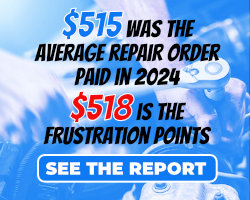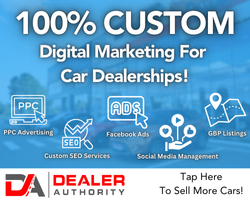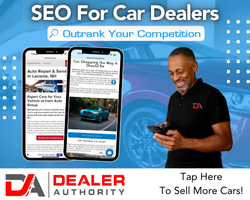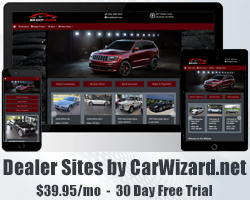[highlight color=”#F0F0F0″ font=”black”]This is part 3 in a 4 part series about automotive social media strategies that are emerging to help car dealers get true benefit. It’s not just about branding. It’s not about auto-feeding marketing content. With the right strategies in a place, dealers can drive foot traffic and website visitors in a way that can help them sell more vehicles and drive more service customers.[/highlight]
Who Knows More: Google or Facebook?
We know a few things about automotive social media. We know that there are three stages and we know that it should drive business. Now, let’s discuss how to position its best asset.
Whenever I speak to dealers about the various digital marketing venues, there is one response that is certain and another that is hit or miss. When I mention the word, “Google”, it has been about four or five years since I’ve heard a dealer tell me that their presence there isn’t important. On the other hand, when I mention the word, “Facebook”, I get equally passionate responses from both sides of the spectrum.
Some see it as an important component that rests somewhere between Google and Bing on the value scale. Others see it as a complete waste of time for their dealership.
The funny part is that they’re both right. When Facebook is used in a way that takes advantage of its most important asset, it can be extremely useful in driving buyers to your website and/or showroom floor. When that asset isn’t used, Facebook can be much less effective, bordering on worthless.
Facebook’s most important asset is Google’s most important asset: data. While Google has replaced the phone book, the encyclopedia, the map, and just about every other bit of knowledge in the world, Facebook has embraced the personal data in a way that even Google cannot. They know all about the ultimate product: us.
It’s through Facebook’s amazing advertising targeting data that dealers can really have an impact. Facebook knows how old we are. They know roughly how much money we make. They know what cars we currently drive. They even know when we’re in the market for a car and which one we’re most likely to buy. It’s this data that a savvy dealer can really use Facebook to get in front of the right people at the right time.
They might not know more than Google, but they know more about us than Google does and that makes their advertising valuable.
Three Types of Targeting
This is really more than should be plugged into a single blog post but we’re going to try. There are hundreds of combinations of targeting options that dealers can use on Facebook. We’re going to focus on the three that have shown the most success for our clients.
First and foremost, there’s Polk data. Before anyone hops in and says, “been there, done that, didn’t see anything from it,” I would contend that most dealers and even vendors who are trying to use it aren’t really taking advantage of it properly. Through Polk data on Facebook, dealers can identify people within driving distance who own a particular vehicle for service targeting or who are wanting to buy a particular vehicle, new or used, for sales targeting.
The key is in the message and this is where many dealers and vendors fail. It’s about serendipity. People do not go to Facebook to buy a car any more than they go to the television to buy a car, but we know that both are effective. The reason is that the message can be seen by the right people at the right time. The difference between them is that with Facebook, you can know that the target audience is most likely in the market for what you’re presenting them.
The message that you put in front of them needs to ring a bell. This isn’t the actual message that you would want to post, but it makes the point:
“Surfing Facebook is fun, but shouldn’t you be looking at some new Nissan inventory in the St Louis area right about now?”
[Picture of a Nissan]
[Link to the Search Results Page]
“We have an incredible selection of new Nissan vehicles in stock. Take a moment and find yours today!”
The average Facebook user doesn’t realize how easy it is to target them. When they see ads like this in their Facebook news feed, they can have that “what a coincidence” moment and obey the message of the ad. “Hmmm, I really should be looking at cars right now rather than Facebook.”
The second strong type of targeting is with your current customer base. By using email addresses or phone numbers, you can target people based upon the message that will resonate the most. For example, one of our most successful service campaigns was a “Customer appreciation” oil change special that went out to a database of people who had done service in the dealership before but who had not been back in over 365 days. The week that we ran the campaign, we had nine of them return for service. More importantly, five of them got more than an oil change. The best part is that the campaign cost $14.
Lastly, there’s the creative campaign through targeting. This is where you take advantage of some of the other interesting targeting data that Facebook has. For example, we ran a campaign targeting people within 50 miles of the dealership who were graduating from college in 2014. What did we hit them with? A link to the College Grad Program, of course.
Tip of the Iceberg
Again, there are hundreds of ways to slice the data. These campaigns don’t “pollute” your Facebook page, either, as they can run as unpublished posts. In other words, you don’t have to put them on your page in order for them to appear in the news feeds of your target audience. You can continue to keep everything on your page clean and community focused while putting the strong message ads in front of just the right people.
The biggest advantage Refreshers have is that Facebook has not done a great job at getting this information out there or making it easy to apply it. Sure, the “Boost” buttons and “Promote this Page” buttons are easy, but they’re also several degrees below the true advertising capabilities of Facebook. For the real juice, you have to spend more time learning the capabilities of Power Editor, targeting behavior, and targeting interests, but this is a good thing. The less your competitors know about how this works, the easier it will be for you to be the only one in your market addressing a captive audience.
Yes, Facebook holds many people captive. They check it multiple times per day. Shouldn’t they be seeing your messages and acting upon them?
In the final of this series, we will go over utilizing your own dealership’s team to make social media as powerful as it can possibly be. Until then, please feel free to comment here or contact me directly if you have any questions.









